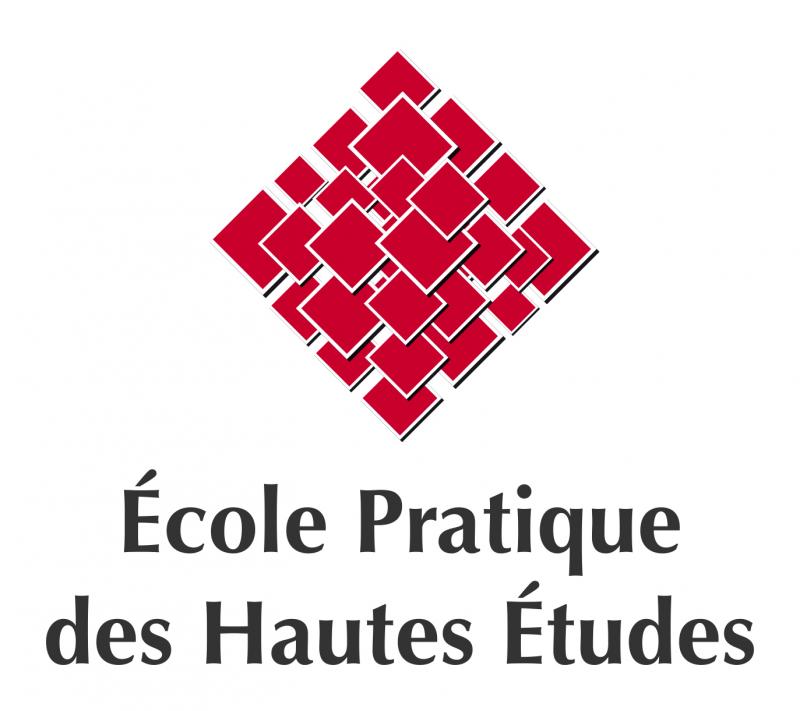Research
From a scientific point of view, I focus on the role and behaviour of the marine top predators
within the ecosystems as well as on their interaction with humans. Sharks within tropical
ecosystems, characterised by their functional complexity, are my favourite model of animals.
I specialised on large sharks which represent a potential danger for people: the great white shark
(Carcharodon carcharias), the tiger shark (Galeocerdo cuvier), the bull shark
(Carcharhinus leucas) and the oceanic whitetip shark (Carcharhinus longimanus), which I studied since 2005 in the Western and EasternPacific, especially around New Caledonia and French Polynesia. Besides a classic ecological approach, I focused on the behaviour and understanding of the bites on humans.
Between 2005 and 2010, I worked a lot on the siklefin lemon shark (Negaprion acutidens) in the context of artificial shark feeding in French Polynesia; I studied both the impact of such practices on the biology of animals and the risks for humans that may be brought by feeding.
Finally, since 2012, I have developed an economic and eco-anthropological approach concerning the general issue of the conservation of coral reefs, as well as the specific issue of the populations of sharks. My approach connects the use of “ecosystem services” and the development of tools such as “payment for ecosystem services” or the implementation of
Marine Managed Areas.
Apart from these specific fields of work, I keep publishing about other subjects that I am interested in such as ethology of toothed marine mammals, eco-toxicity (in particular ciguatera fish poisoning), the ecology of reef fish or even free-diving for men.
Focus points
- Functioning and resilience of coral reefs ecosystems
- Biology and ecology of sharks and marine flagship species
- Shark behaviour and bites on humans
- Shark contribution to ecosystem services
- Oceanian eco-anthropology in link with sharks
- Tools for sustainable management of coral reef ressources
Main current collaborators
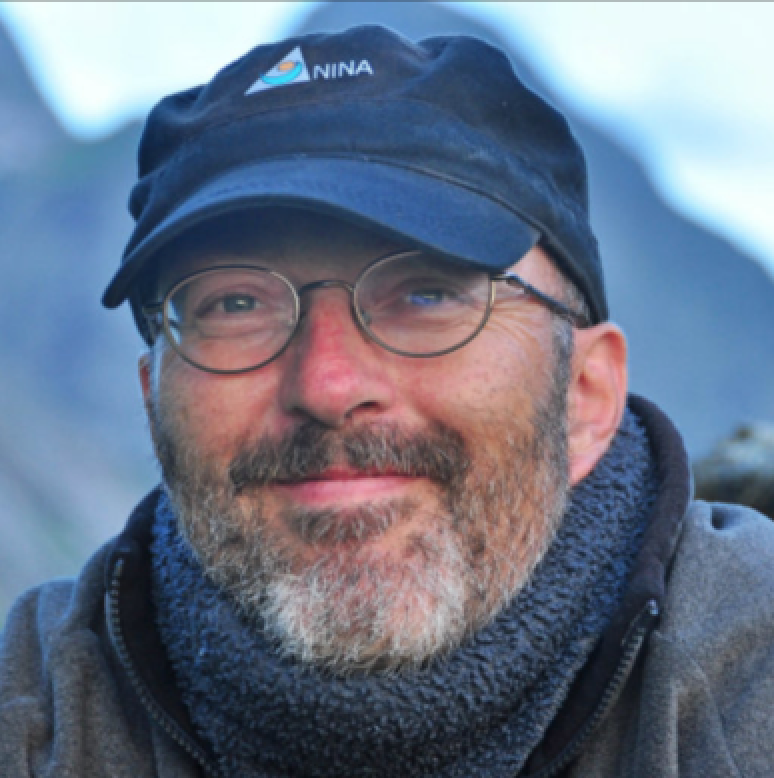
John DC Linnell, human-wildlife interactions specialist
Norvegian Institute of Nature (NINA)
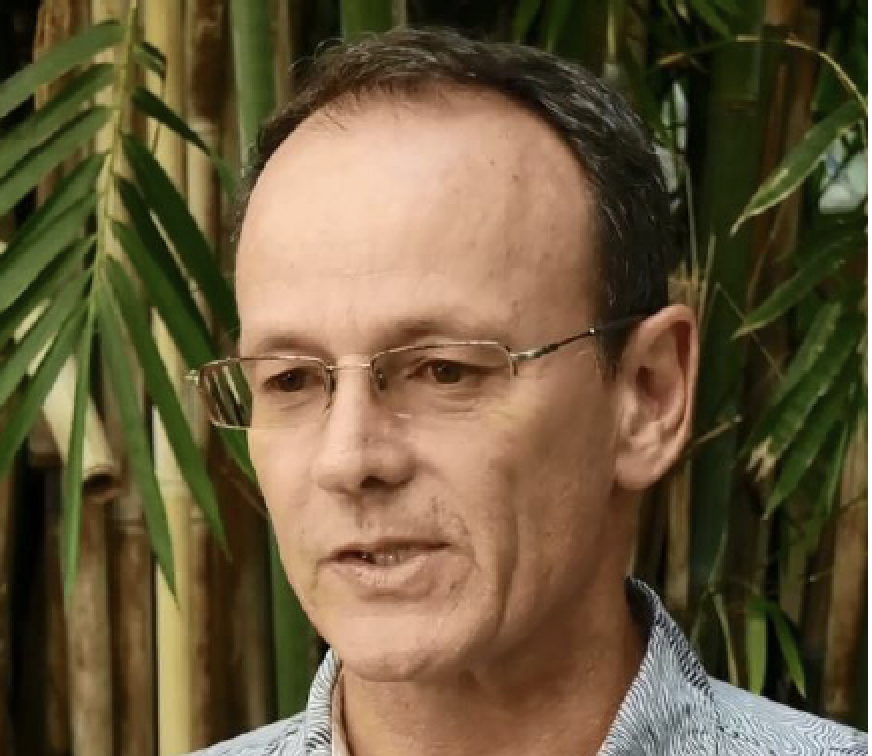
Carl G. Meyer, shark specialist
University of Hawaii
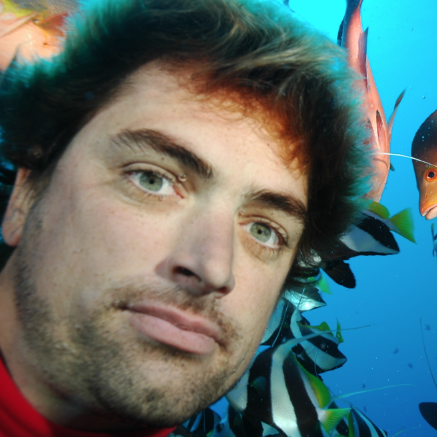
Nicolas Buray, plongeur naturaliste
Observatoire des Requins de Polynésie
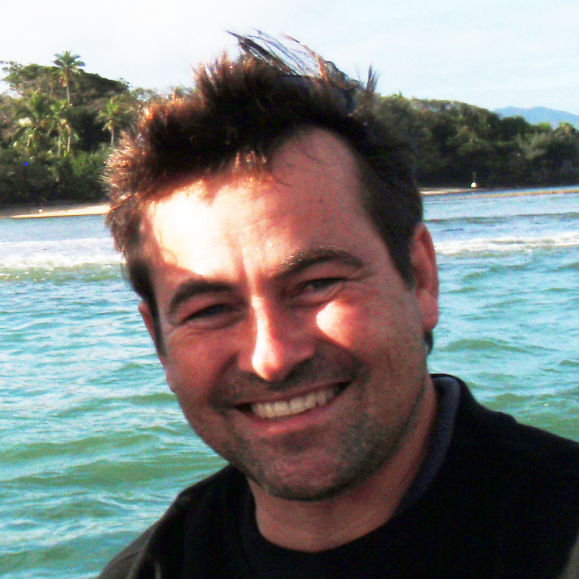
Serge Planes, généticien
Directeur de recherche CNRS, UMR3278 EPHE-CNRS-UPVD

Jean Guiart, ethnologue
Professeur honoraire, Ecole Pratique des Hautes Etudes

Frédéric Torrente, ethno-anthropologue
Post-doc, UMR3278 EPHE-CNRS-UPVD

Johann Mourier, éco-comportementaliste
Post-doc, UMR3278 EPHE-CNRS-UPVD

Nicolas Pascal, économiste de l’environnement
Chargé de conférence EPHE associé, UMR3278 EPHE-CNRS-UPVD
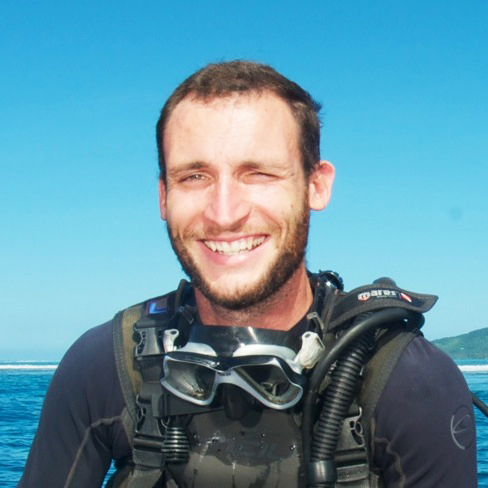
Pierpaolo Brena, éco-comportementaliste
Thésard, UMR3278 EPHE-CNRS-UPVD

Pierre Legendre, statisticien
Professeur, Université de Montréal
I have collaborated with dozens of people in the course of my scientific research and the list opposite is necessarily incomplete. Only the people with whom I have quite recently collaborated are presented here. May some of those absent from this list forgive me if they feel that they have been unduly forgotten…
Research projects
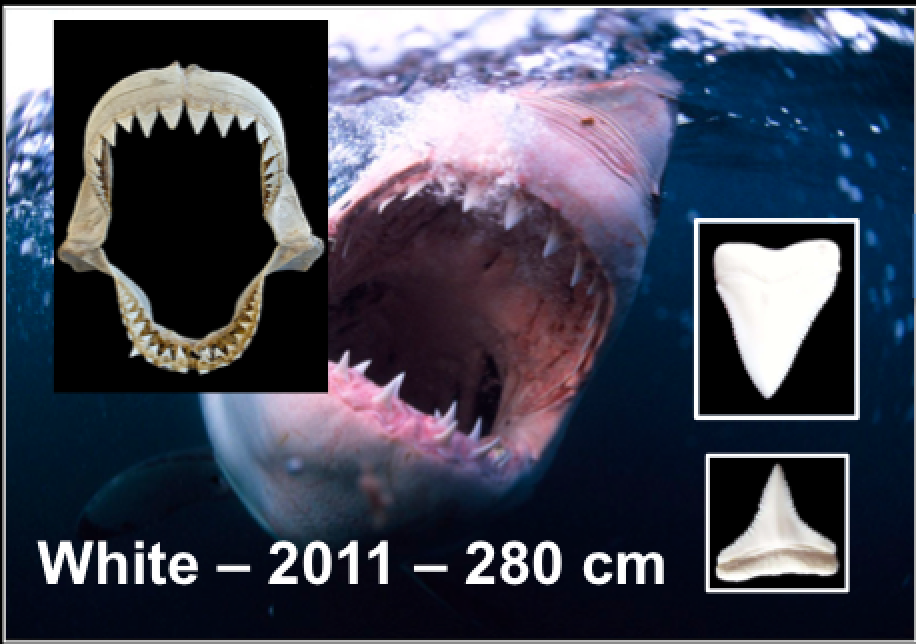
Although fatal shark attacks are very rare in the world, they are highly publicized and reinforce the public’s negative view of these animals. In the context of human fatalities, this perception contributes to the implementation of indiscriminate shark culling campaigns based on the assumption that each shark materializes a non-negligible probability of attacking a human. Also, a reduction in the number of sharks would lead to a lower risk of attack. Unless it leads to the total eradication of the animals (unlikely) or to the incidental capture of the animal responsible for an attack (unlikely), this hypothesis is false and, beyond the ethical problem, entails an unbearable ecological cost. This hypothesis based on the density of sharks can be qualified as an “ecological approach”. It is this same “ecological” approach that seeks, unsuccessfully to date, to explain the attacks by environmental or anthropogenic factors whose evolution would explain the attacks (although they play a role).
My project consists of promoting and testing the hypothesis that attacks would rather be more effectively explained with a “behavioural” approach, which holds that, inherently due to their status as extremely flexible apical predators, some sharks would develop an “abnormal” behaviour that would lead them to bite humans in a very marginal and stochastic way. Thus, the effective management of attacks would not require studies – such as those currently being conducted – of an “ecological” nature, but of a “behavioral” nature. Concretely, the artificial feeding of a potentially dangerous shark population would make it possible to concentrate the sharks in order to identify them individually. This proximity would not only allow the evaluation of their density but also their “personality” (especially their behavior towards humans). Provided that the hypothesis of a depletion of food resources in a given shark population is admissible as a contributing factor to the attacks, intensive feeding could incidentally serve as a food outlet by capturing potential aggressors from humans. This working hypothesis, which is based on the application to the marine environment of the concept of “problem animals” developed on land (lions, tigers, crocodiles, etc.), would have the merit of defusing situations of radical blockage between defenders of a total eradication of sharks and promoters of their hyper-protection. It suggests that the problem of attacks could eventually be resolved with the elimination, very targeted and justified, of individuals at risk, without too much harm to the global population.
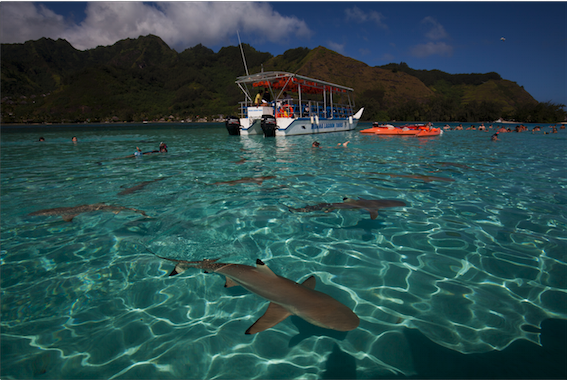
This project aims to:
- Capitalize and perfect scientific knowledge as a basis for a sustainable use of emblematic animals through ecotourism;
- Develop a specificity of animal ecotourism in French Polynesia based on the place of emblematic animals in Polynesian culture, to make it an international tourist asset;
- To be inspired by scientific knowledge to define or improve operational tools such as codes of good conduct and cultural knowledge content according to the activities and animals concerned;
- To train resource persons and relays in associations to popularize good behavior and promote knowledge and respect for animals among operators and users;
- Develop participatory science to better involve civil society, especially children, in the sustainable use of emblematic animals;
- Promote to political decision-makers the development of a legislative framework adapted to the sustainable development stakes of animal ecotourism in French Polynesia, attractive at the international level.
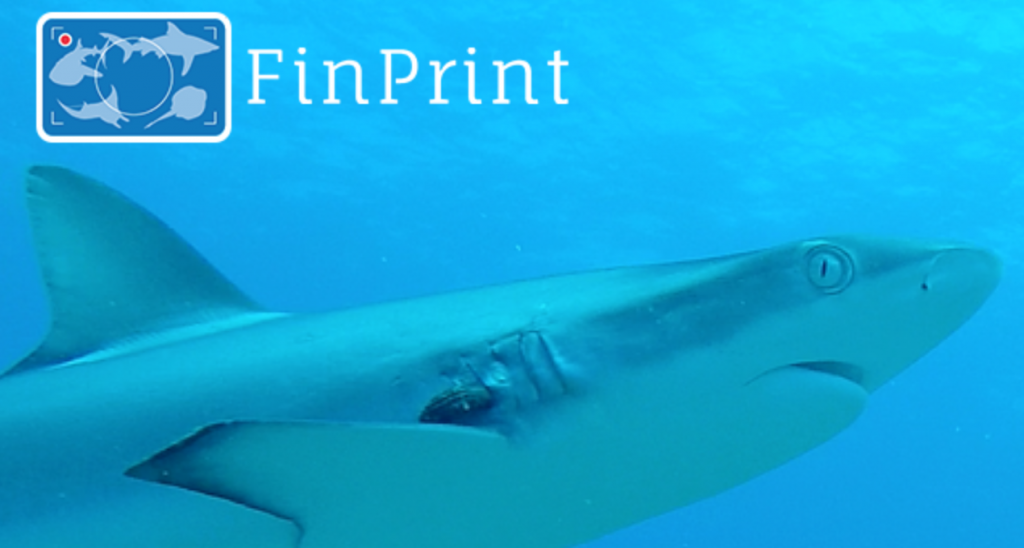
This project is the Polynesian declination of an international initiative led mainly by American and Australian researchers, specialists in elasmobranches (see https://globalfinprint.org/). Its aim is to determine the environmental and human factors determining, at a macro scale, the density and specific diversity of sharks and rays around coral reefs (essentially the outer slopes). The method consists of using a system of cameras attached near a bait to attract fish, and filming them for several tens of minutes (called BRUVs). In addition to this information, surveys are carried out to evaluate the fish biomass available for feeding predators, the characteristics of the environment and the anthropic impact. In French Polynesia, six sites have been pre-identified for data collection, including three high islands (Mooréa, Tahiti Peninsula and Maupiti) and three atolls (Rangiroa, Apataki and Ahe) on missions that will take place between November 2016 and June 2017. The sites were chosen according to a decreasing gradient of anthropogenic pressure.
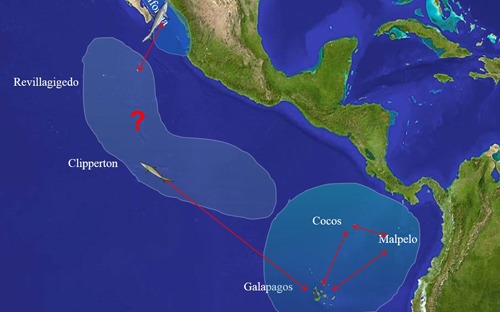
This project began when I participated in a participatory science mission organized by Michel Labrecque (N2PIX) on the Clipperton atoll (1000 km west of Mexico) on board the Quino El Guardian ship, with 14 eco-tourist divers and three scientists, namely Mauricio Hoyos (Mexico), Sandra Bessudo (Colombia) and Eric Clua (France). This mission was an opportunity to capture white tip sharks (Carcharhinus albimarginatus) and Galapagos sharks (C. galapagensis) with acoustic and satellite tags, in order to study the movements of these fish on a regional scale; DNA samples were also taken. The global challenge is to better understand the movements of migratory sharks between the archipelagos of the Eastern Tropical Pacific, notably Revillagigedo (Mexico) and the components of the “East Tropical Pacific Maritime Corridor” CMar including the Galapagos (Ecuador), Malpelo (Colombia) and Cocos (Costa Rica). Genetic analyses should allow to assess the resilience of these different shark populations. The project should continue with the tagging and genetic sampling of other sharks (including whales and hammerheads if possible) on Clipperton and the maintenance of the acoustic reception device.
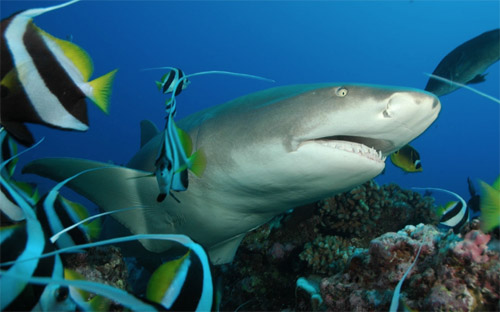
This project is a continuation of the EcoReq I project, described below. Its launch was made possible by financial support from the Ministry of Ecology and Sustainable Development, to which should be added the financial support of IFRECOR and the RESCCUE program (with funding from the French Development Agency). The objective of this new project is to study the effects of feeding on lemon sharks. However, the project is intended to be broader by integrating other shark species (such as the Tiger) and other sites, such as Bora-Bora. It also integrates a genetic component aimed at assessing the potential impact of feeding on the resilience of the shark populations concerned. The behaviour of animals in intra-species but also in inter-species (between shark species and with man) is developed, notably through a thesis by Pierpaolo Brena, under my co-direction with Serge Planes. Finally, the economic dimension is very present with a component aiming to characterize the role of sharks in the ecosystem services provided around Moorea and the study of the implementation of mechanisms such as “payment for ecosystem services”, particularly in the ecotourism sector based on feeding or simply shark watching.
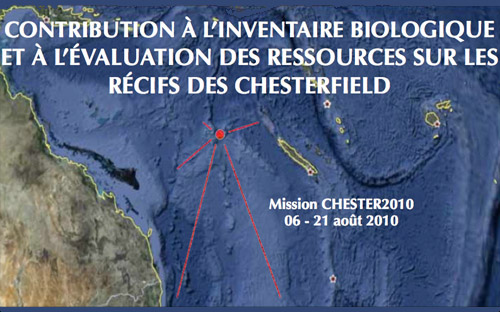
This project is part of the dynamic of creating a partnership between France and Australia for a concerted and sustainable management of the Coral Sea, initiated in 2008 with the support of the coordination unit of the CRISP program. The Chesterfields are an archipelago in the Exclusive Economic Zone of New Caledonia, halfway with Australia, in the middle of the Coral Sea. This location is an important potential link in the connectivity between these two large islands, for the species structuring the resilience of the respective coral ecosystems, both classified as UNESCO World Heritage Sites.
On the basis of funding between the Secretariat of the Pacific Community (SPC) and the Pacific Regional Environment Programme (SPREP), two prospecting missions were organized in the framework of this project, respectively in July 2010 and November 2011. The first mission brought together 12 scientists whose objective was to i) Capitalize information on the biological diversity of the area in scleractinian corals, reef bony fishes, birds and cetaceans ; ii) Gather information on the state of health of the coral habitat and the importance of the populations of the area in benthic invertebrates of commercial interest, bony fish of commercial interest, reef sharks and great sharks, birds and cetaceans; iii) Implement a study on the ecology of the great sharks frequenting the area. The second mission included only seven scientists who focused on the turtle egg-laying survey, monitoring of avifauna and counting of reef sharks and the tagging of large sharks. Two reports were published on the subject, as well as scientific papers.
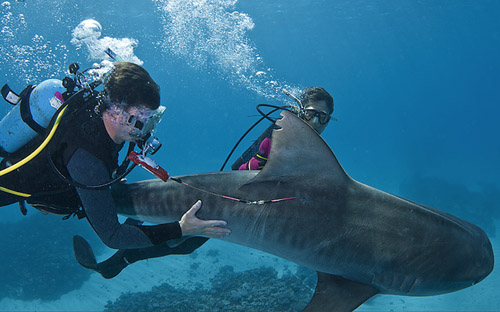
This project was born out of my encounter with Jonathan Werry, while he was starting his PhD at Griffith University in Eastern Australia. Jonathan focused his PhD on the study of the use of coastal habitats by the Bulldog shark (Carcharhinus leucas) and proposed to me to use his know-how in the capture and tagging of large sharks to initiate a study on the connectivity of large sharks in the Coral Sea. Contacts were made with CRIOBE in French Polynesia to formalize a technical collaboration on the subject, linking the Secretariat of the Pacific Community in Noumea, Griffith University in Australia and CRIOBE in French Polynesia.
Funding has been obtained by the CRISP coordination unit, notably from the French Development Agency, the Pacific Fund for Regional Cooperation, so that J. Werry can carry out a post-doc on the subject and develop with me a tagging program for about 40 Tiger sharks (Galeocerdo cuvier) on either side of the Coral Sea, as well as a dozen Bull sharks (C. leucas).
Ce projet a débouché sur la publication de plusieurs articles scientifiques sur le sujet.
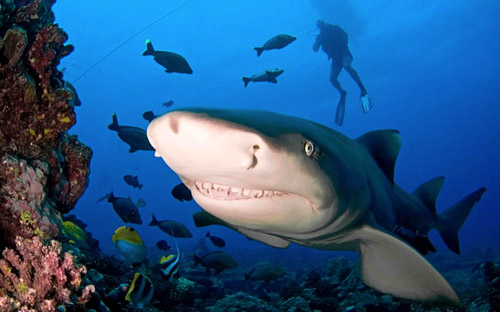
This project was born from my meeting with Nicolas Buray, then a professional diving instructor based in Moorea, French Polynesia. Fascinated by sharks, Nicolas was using his daily dives to supervise tourists on a shark feeding site to note the presence of about thirty Lemon sharks that he had managed to identify individually.
After having obtained funding from the CRISP program coordination unit, we (Serge Planes from CRIOBE and myself) proposed to N. Buray to prepare an EPHE diploma based on the study of the effects of feeding on the behavioral ecology of this species. In addition to the realization of this diploma supported in 2010, this project allowed the publication of several scientific articles related to this ecotouristic activity developed on Moorea.


 Français
Français